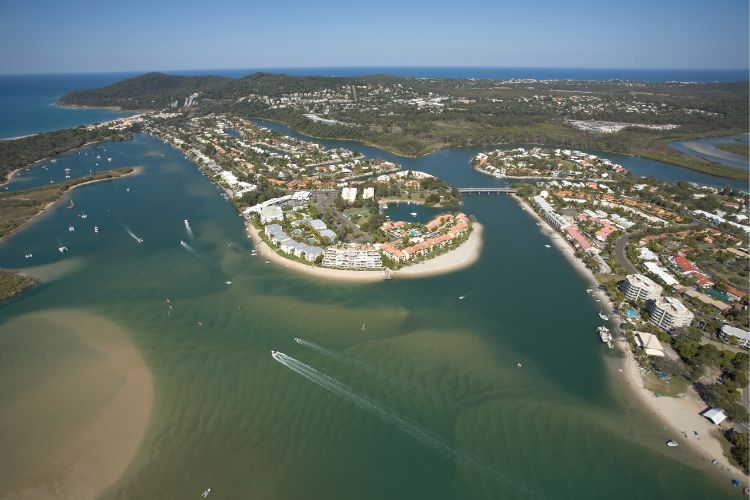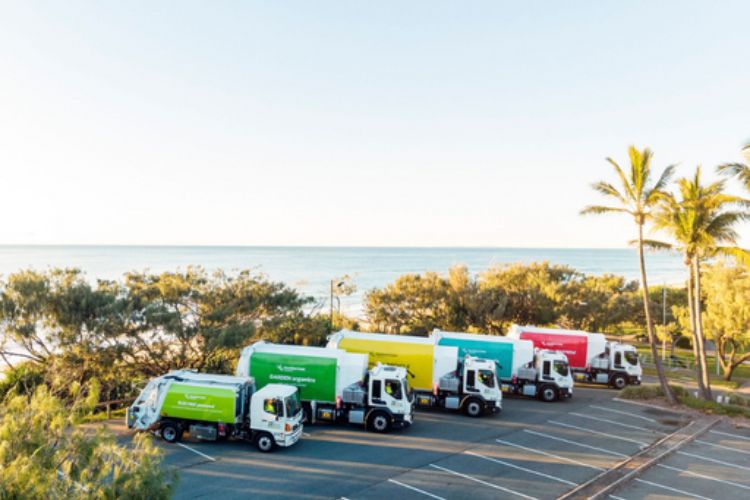In this article, we will take a deep dive into the waste and recycling statistics of the Sunshine Coast.
Here at Best Price Skip Bins, we care deeply about the environment and about making changes that will safeguard the future of our wonderful country for the long term.
That means making changes and looking hard at the facts and figures associated with waste and recycling in Australia.

Uncovering the Facts: A Comprehensive Look at Waste and Recycling Statistics in the Sunshine Coast Region
Uncovering the facts about waste and recycling means looking at numbers and the habits of the people who live and work on the Sunshine Coast.
This beautiful part of Australia is well-known for its stunning beach resorts, incredible surf opportunities, amazing mangrove forests, and National Parks.
The tourism industry is a big part of what makes the Sunshine Coast tick. It’s not all about holidays and fun in the sun, though; this part of Australia is home to 365,000 people who all need to live, work and do their business daily.
This means that, combined with visitors to the area, the population creates a lot of waste. How is that waste managed? How much of it is recycled, and how much ends up in landfills?
We decided to find out.
How much waste is produced on the Sunshine Coast each year?
It’s hard to pinpoint exactly how much waste is produced on the Sunshine Coast yearly because of factors such as incoming visitors contributing to the total and things changing seasonally.
However, the Sunshine Coast Council estimates that around 500,000 tonnes of waste is produced yearly.
That includes waste from homes, businesses and organisations.
How much of this waste is recycled?
Again, it’s difficult to get a very clear answer to this because so much of our waste is measured in terms of where it comes from rather than as a whole for a region.
For example, in the Recycling and Waste in Queensland Report, one fact is that in Queensland, in 2021-2022, local governments sent 316,900 tonnes of paper and packaging for recovery.
This is a good amount of recovery, as is the fact that organic processors converted 1.62 million tonnes of organic material into soil conditioners, manufactured soil and potting mixes.
What are the most common items that are recycled?
As in other parts of Australia, the most common items which are recycled include the following:
- Metal
- Paper and cardboard
- Plastics
Metal, including aluminium cans, hold their value. This means people are more likely to recycle metal items as they will receive payment for their efforts.
What are the most common items that are sent to landfill?
The most common items to be sent to landfills include organic waste such as food, yard trimmings and paper.
Organic waste like food and yard trimmings is a problem because it creates methane, which is responsible for some of the global warming we see occurring.
The more waste we can keep out of landfills, the better.
How much waste is produced per person on the Sunshine Coast each year?
The 12-year average annual waste generation rate for households per capita is 600kg across Queensland.
Green waste is more variable, and this can be affected by flooding or fires, which are unpredictable.
How does this compare to other Australian cities?
Canberra, a city similar to the Sunshine Coast, produces over 1 million tonnes of waste yearly.
Whilst Canberra is slightly larger, this is quite a significant difference and shows that the Sunshine Coast is making great strides in terms of waste and recycling management.
What initiatives are in place to increase recycling rates?
The Sunshine Coast Waste and Recycling Strategy 2015-2025 is a key document produced by the local government to guide their future waste management decisions.
The plans include:
- A review of the current and emerging alternate waste technology/treatment systems.
- The delivery of innovative, financially viable 21st-century waste infrastructure for future generations that will support projected growth and deliver landfill diversion targets.
- The construction of a new resource recovery centre at Nambour.
- The expansion of the waste and collection services to cover 95% of the region’s premises.
These initiatives are only the tip of the iceberg, and the Sunshine Coast government has many more plans to improve and reset the state of waste management in the region.
What are the challenges associated with waste management on the Sunshine Coast?
Some of the key challenges are associated with environmental difficulties. For example, natural disasters are difficult to predict.
Others are as follows:
- A collection and disposal infrastructure which is not robust enough to cope with demand
- Financial limitations
- Lack of education
It would seem that great efforts are being made to change the current situation, though, and with the population of the Sunshine Coast set to increase, with more than 8,300 people each year calling the Sunshine Coast Home, by 2041, more than 500,000 people are expected to live in the area – change needs to happen quickly.
Associated Costs
The costs associated with waste management are varied and include the following:
- Collection
- Transportation
- Storage
- Processing

Image credit: www.sunshinecoast.qld.gov.au
Environmental Impacts
The environmental impacts of waste management are varied, but one of the worst factors is undoubtedly landfill and the impact it has on the environment.
Landfill sites have improved over the years, with many containing waste chambers, but improvements still need to be made.
Landfill sites produce high amounts of methane, which impacts the ozone layer, pollutes the water table, and damages local ecosystems.
Waste and Recycling Trends on the Sunshine Coast
Trends in waste and recycling are consistently changing as people become more aware of the issues surrounding recycling and how to improve outcomes.
One of the most popular trends in recent years is upcycling fashion items. Re-making and re-inventing clothing rather than buying new things is a great step forward because fast fashion greatly contributes to landfills.
What can I do about it?
Making a difference begins at home. If your current recycling habits are good, you might want to take bigger steps towards contributing to a circular economy.
A circular economy is where goods and products are all reused and recycled without going to landfills.
Think carefully about what you purchase. Is it made sustainably? Is it something you can use for many years to come?
When it comes to recycling your waste, occasionally, you may find you have too much to manage.
Check our article on Council Permits for Sunshine Coast Councils to learn whether you need a permit.
Final thoughts and key takeaway.
The Sunshine Coast is making huge strides in improving its waste and recycling strategies.
As a resident of the Sunshine Coast, you can support these efforts by reusing and recycling as much as possible.
From time to time, it’s very difficult to stick to these goals, no matter how good our intentions are.
For example, building work will usually produce some waste; in these cases, you’ll need to find a way to dispose of that debris.
Consider skip bin hire as a good alternative to recycling things yourself. Skip bin hire is a very eco-friendly way of managing waste because much of what is collected is sorted and taken to various waste management sites to be turned into new products. We’ve even put together a list of the best skip bin companies within the Sunshine Coast region to save you some time and effort.
Skip bin hire is affordable and easy to book. If you’d like to learn more or have any questions, you’d like to ask. Get in touch with the team at Best Price Skip Bins.
